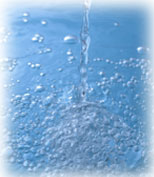|
|
.gif) |
.gif) .gif) .gif) |
|
Shandong Taihe Watertreatmet Co., Ltd.
|
|
EDTMPS introduction:
|
|
 In
lacks the anti- filthy medicinal preparation gentle etching
reagentin the boiler aqueous system to be able to have massive scale
and thecorrosion, but creates the thermal efficiency to reduce the
wasteenergy, moreover also possibly can cause the steam to divulge,
because scale seriously causes every year the accident surpasses the
accidenttotal 20%; scale will form in the cooling system can reduce
the flowchannel cross-sectional area, will increase the water
cycleresistance, will hinder the normal heat change along with the
scale unceasingly will add thick, will create equipment
seriouscooling not good to bring a succession of evil consequence,
willeffectively seek one kind effectively anti- to be filthy
corrosion inhibitor becomes the urgent matter. In
lacks the anti- filthy medicinal preparation gentle etching
reagentin the boiler aqueous system to be able to have massive scale
and thecorrosion, but creates the thermal efficiency to reduce the
wasteenergy, moreover also possibly can cause the steam to divulge,
because scale seriously causes every year the accident surpasses the
accidenttotal 20%; scale will form in the cooling system can reduce
the flowchannel cross-sectional area, will increase the water
cycleresistance, will hinder the normal heat change along with the
scale unceasingly will add thick, will create equipment
seriouscooling not good to bring a succession of evil consequence,
willeffectively seek one kind effectively anti- to be filthy
corrosion inhibitor becomes the urgent matter.
EDTMPS is nitrogenous organic polyphosphonic acid, a part of cathodic corrosion inhibitor.Its corrosion inhibition is 3~5 times better than that of inorganic polyphosphate. It can be fully dissolved in water, innocuous and none pollution to environment, has good chemical stability and thermal tolerance. It shows excellent scale inhibition ability under temperature 200℃. It can dissociate into 8 positive-negative ions, thus can chelate with many metal ions to form polymer reticulation complex, to destroy the normal crystallization of calcium scale. EDTMPS shows better antiscale effects to calcium sulfate and barium sulfate.
EDTMPS application scope and application
method:
EDTMPS can be used as corrosion inhibitor in circulating cool water system and boiler water. It is a chelating agent in non-cyanogen electroplating industry and a water-softening agent in printing & dyeing industry. When used alone, 2~10mg/L is preferred. When built with HPMA by ratio ETDMP:HPMA=1:3, it can be used for low pressure boiler. It can also be built with BTA, PAAS and zinc salt.
| items |
index |
| Appearance |
Clear yellow to umber transparent liquid |
| Active component
(EDTMPS)%
| 30.0min |
| Organic phosphonic acid
(asPO43-
)% |
10.0min |
| Phosphorous acid
(as PO33-)% |
5.0max |
| Phosphoric acid
(asPO43-
)% |
1.0max |
| pH
(1% water solution) |
9.5-10.5 |
| Density
(20℃) g/cm3 |
1.25min |
| Chloride (as Cl-)% |
3.0max |
|
|
With EDTMPS correlation
technical paper:
|
|
-
The Improvement of the Synthesis Method of EDTMPS
-
Analysis and Detection of EDTMPS's Impurity
-
Study of the compatibility between common bactericide and organic phosphate
-
Inhibition Capability of Combinational Inhibitor AMHE for Barium/Strontium Sulfates Scaling
-
Preparation of 67Ga-EDTMP and its biodistribution studies
-
ANALYSIS OF THERAPEUTIC EFFECT OF PAMIDRONATE COMBINED WITH 153Sm-EDTMP IN PATIENTS WITH CANCER AND MULTI-BONE METASTASES
-
Experimental study of the biological properties of 153Sm-nano-Hydroxyapatite
-
Determination of the Stability Constants of Sm-EDTMP and Their Speciation in Plasma Model
-
Adsorption of 117Snm(Ⅳ)-EDTMP on Hydroxyapatite
-
Clinical value of combined 153Sm-EDTMP and Yunke therapy for relief of metastatic bony pain
-
The Entrance to Bone Tumor Cells of 153Sm-EDTMP by Microautoradiographic Tracing
-
Simulation Analysis of Sm-EDTMP in Vitro and in Blood Plasma
-
The Adsorption of 117Snm(Ⅳ)-EDTMP on Collagen
-
Clinical observation of multiple bone metastases with153Sm-EDTMP
|
|
|
.gif) |
.gif) |
|





 In
lacks the anti- filthy medicinal preparation gentle etching
reagentin the boiler aqueous system to be able to have massive scale
and thecorrosion, but creates the thermal efficiency to reduce the
wasteenergy, moreover also possibly can cause the steam to divulge,
because scale seriously causes every year the accident surpasses the
accidenttotal 20%; scale will form in the cooling system can reduce
the flowchannel cross-sectional area, will increase the water
cycleresistance, will hinder the normal heat change along with the
scale unceasingly will add thick, will create equipment
seriouscooling not good to bring a succession of evil consequence,
willeffectively seek one kind effectively anti- to be filthy
corrosion inhibitor becomes the urgent matter.
In
lacks the anti- filthy medicinal preparation gentle etching
reagentin the boiler aqueous system to be able to have massive scale
and thecorrosion, but creates the thermal efficiency to reduce the
wasteenergy, moreover also possibly can cause the steam to divulge,
because scale seriously causes every year the accident surpasses the
accidenttotal 20%; scale will form in the cooling system can reduce
the flowchannel cross-sectional area, will increase the water
cycleresistance, will hinder the normal heat change along with the
scale unceasingly will add thick, will create equipment
seriouscooling not good to bring a succession of evil consequence,
willeffectively seek one kind effectively anti- to be filthy
corrosion inhibitor becomes the urgent matter.